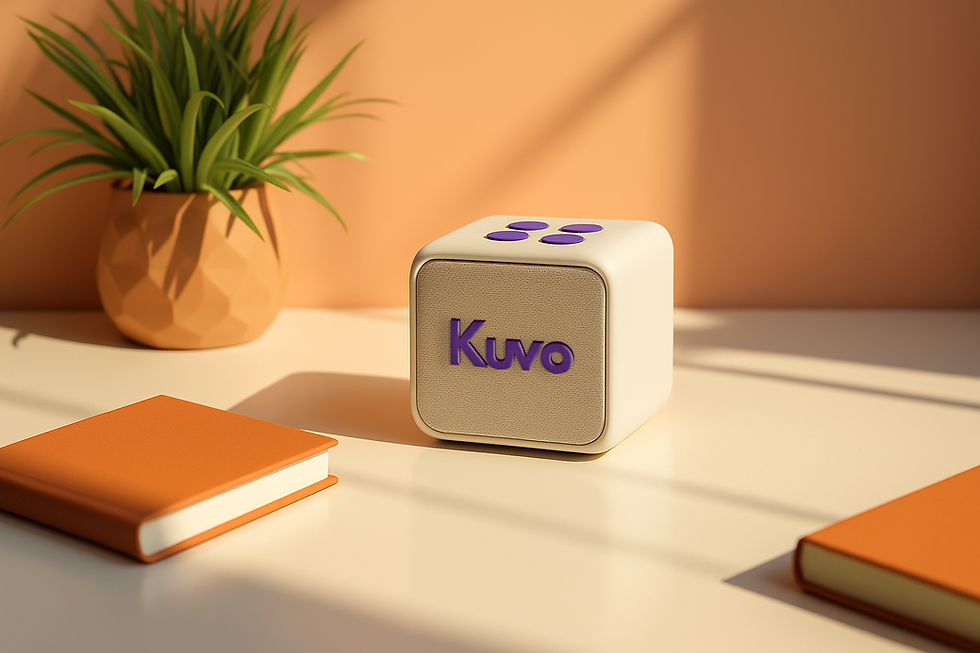Dyslexia in Children: How to Detect It Early and Support Effectively
- Santiago Marván
- Jul 21
- 3 min read
Updated: Aug 14

Dyslexia is one of the most common, but also one of the most misunderstood, learning differences in childhood. Early detection and the right support can make a profound difference in a child’s academic, emotional, and social journey.
Whether you’re a parent or teacher, your role in recognizing and responding to signs of dyslexia can change the course of a child’s life, for the better.
🧠 What Is Dyslexia?
Dyslexia is a neurobiological condition that affects how the brain processes written language. It has nothing to do with intelligence or motivation, in fact, many children with dyslexia are bright, curious, and highly creative. But they may struggle with:
Reading
Writing
Recognizing language sounds (phonological processing)
Dyslexia often runs in families and begins early, though it’s commonly identified during the first years of elementary school, when literacy demands increase.
👀 How Parents Can Spot Early Signs at Home

Parents are often the first to notice red flags. Here are some common indicators:
Difficulty learning the alphabet or remembering letters
Trouble rhyming words or identifying beginning sounds
Reversing letters or syllables when speaking or writing
Avoiding activities that involve reading or writing
Slow, labored reading with pauses, errors, or made-up words
Difficulty following instructions in sequence
Confusing left and right
🏫 What Teachers Might Observe in the Classroom
Educators, with their close view of academic progress, may notice:
Difficulty reading aloud with fluency
Frequent trouble copying from the board
Disorganized or heavily misspelled writing
Strong oral comprehension, but weak reading comprehension
Ongoing frustration with reading and writing tasks
Underperformance in reading-heavy subjects despite solid reasoning or verbal skills
🛠️ What To Do First
If you see signs of dyslexia, the goal isn’t to panic, but to act. Early support matters.
Observe consistently: At home and school, note concrete examples of reading/writing struggles
Communicate with teachers: Share observations to build a complete picture
Seek a professional evaluation: A child neuropsychologist or learning specialist can offer a formal diagnosis and rule out other conditions
Start targeted support early: Phonological awareness exercises, guided reading, and multisensory strategies can make a huge difference
Request classroom accommodations: Extended time, oral testing, and read-aloud options reduce cognitive load while preserving learning goals
Support emotional wellbeing: Children with dyslexia often feel “less than.” Respectful encouragement and emotional validation are essential

✅ What Helps Children with Dyslexia
Sound games, rhyming, and syllable play
Movable letters or tactile materials for hands-on learning
Daily shared reading, without pressure
Praise for effort, not just outcomes
Accessible books (large print, audiobooks, or e-readers)
🚫 What Doesn’t Help
Comparing them to peers
Repeating the same tasks without adapting
Punishing mistakes in reading or spelling
Assuming “they’ll grow out of it”
🔊 Kuvo Can Support Children with Dyslexia Through Audio Learning

Children with dyslexia often benefit from learning experiences that rely more on listening, rhythm, and interaction than on written text. That’s where Kuvo’s screen-free, voice-powered platform can be a helpful ally.
While Kuvo is not a therapeutic tool or diagnostic service, it complements structured interventions by offering:
🎧 Audio-based learning without reading pressure:
Children engage with stories, educational topics, and explanations entirely through voice, no text to decode, no screen fatigue.
🗣️ Enhanced listening comprehension and vocabulary:
Kuvo’s interactive storytelling naturally builds language understanding through repetition and conversation.
🔁 Paced, low-pressure repetition:
Kids can replay stories, ask the same questions, and revisit topics as often as they need, hearing words in different contexts helps build memory, understanding, and confidence.
🛡️ Safe, comparison-free learning:
Kuvo doesn’t involve grades, timers, or competition, just joyful learning that meets kids where they are.
By giving children a way to explore knowledge through sound, Kuvo creates an inclusive learning environment that supports diverse needs, including those of children with dyslexia.
🧭 Identifying Isn’t Labeling, It’s Empowering
A dyslexia diagnosis doesn’t mean a child can’t learn, thrive, or dream big. It simply means they need a different roadmap, and supportive adults to guide the way.
To identify dyslexia is not to label. It’s to lift an invisible weight, replace frustration with understanding, and open a path forward, on their own terms.
References:
Shaywitz, S. (2020). Overcoming Dyslexia. Knopf.
Snowling, M. (2019). Dyslexia: A Very Short Introduction. Oxford University Press.
Lyon, G. R., Shaywitz, S. E., & Shaywitz, B. A. (2003). A Definition of Dyslexia. Annals of Dyslexia, 53, 1–14.
Papalia, D. E., Martorell, G., & Feldman, R. D. (2022). Human Development Through the Lifespan. McGraw Hill.
International Dyslexia Association (2023). Facts About Dyslexia



Comments